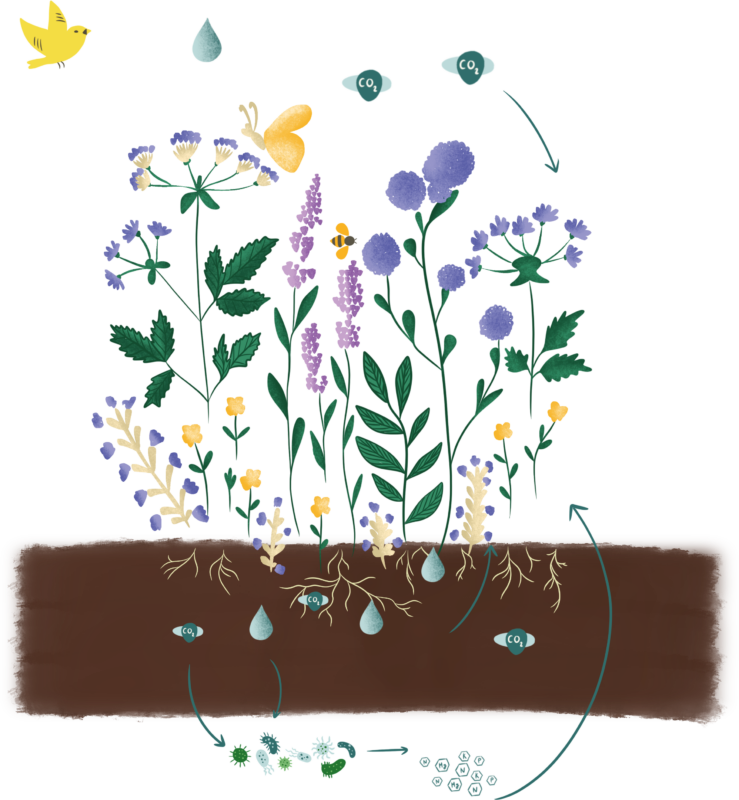In our quest for regenerative agriculture, we have set an objective of a minimum of 20% of our lands to be left fallow (meaning not cultivated). As I write this article in December 2023, we are at 27% of our lands are either prairie or meadow. This is to allow the soil to rest between two crops. These wildflower meadows are not like any other fallow land. Here, the soil never truly rests because we maintain a cover crop with lively roots. Over the next 5 to 7 years, or perhaps even longer, these flowering meadows serve to both nourish the soil and serve as a banquet for pollinators.
Flowering meadows bring several positive impacts:
Firstly, they play a vital role in climate regulation, trapping atmospheric carbon in the soil through plant photosynthesis. Plus, enriching the soil with carbon and organic matter ensures the farm’s longevity and the well-being of the surrounding environment.
Secondly, they work wonders in enhancing soil quality. The deep-rooted plants of the meadow help loosen the soil, improve its structure, and boost its organic matter content. This, in turn, leads to better water absorption, reduced erosion, and a healthier nutrient cycle in the soil.
Thirdly, meadows are also champions in water management. They reduce the intensity of floods and excessive water flows, acting like sponges during rainy spells and supplying water to thirsty plants during dry times. Moreover, they act as filters, trapping pollutants and providing surface waters and aquifers with high-quality water.
Lastly, by tending to our meadows, we cultivate the richness of our natural habitats. Species-rich meadows provide shelter, food, and breeding grounds for a wide variety of species. This local biodiversity includes pollinators and other beneficial insects that can help defend our crops against pests, reducing the need for pesticides.

Our goal? To increase the organic matter levels by 2% (from 1% to 3%). This represents 165 tons of carbon stored per hectare, equivalent to 1155 tons of CO2 for this 7-hectare plot. Imagine that’s over 260 round trips between Paris and New York!
DID YOU KNOW?
France recognizes the importance of increasing the organic matter in soils. With the “4 per 1000” initiative, it has called on all countries to increase soil carbon by 0.4% each year. If every nation were to achieve this goal, we could store up to 75% of the world’s annual greenhouse gas emissions in soils, which would constitute a significant change for the future health of our planet.
To enter our website, you must be of legal drinking age in your country.